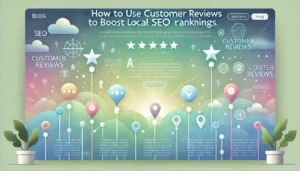Strategies for Positioning Your Brand for Long-Term Success
In today’s fast-paced market, positioning your brand for long-term success requires strategic planning and a deep understanding of your audience. Here are key strategies to help you achieve sustained excellence:
Understand Your Audience
The cornerstone of successful branding is a clear understanding of your target audience. Take the time to analyze their preferences, pain points, and behaviors. You can use methods such as surveys, focus groups, and social media analytics to gather valuable insights. Building buyer personas will not only help you tailor your messaging but also allow you to create products that truly resonate with your customers.
Build a Strong Brand Identity
Your brand identity encompasses your logo, colors, messaging, and overall design. Ensure your identity aligns with your mission and values. A strong visual brand creates recognition and trust, key elements for long-term success. Here are some elements to focus on:
- Consistency: Use the same colors and fonts across all platforms to foster familiarity.
- Unique Selling Proposition (USP): Identify what sets your brand apart from competitors.
- Storytelling: Share your brand’s story to create emotional connections with your audience.
Embrace Innovation
In a constantly changing market, embracing innovation is crucial. Keep an eye on industry trends and be prepared to adapt your strategy. This doesn’t mean you have to overhaul your brand constantly, but minor adjustments can keep your offerings relevant. Encourage a culture of creativity within your team, allowing them to explore new ideas that could enhance your products or services.
Engage with Your Customers
Building a community around your brand fosters loyalty and advocacy. Engage with your customers on social media, respond to their inquiries, and take their feedback seriously. Here are some ways to deepen customer engagement:
- Social Media Interaction: Engage with customers through comments, polls, and direct messages.
- User-Generated Content: Encourage customers to share their experiences with your brand, fostering community and authenticity.
- Loyalty Programs: Implement rewards for repeat customers to enhance their connection with your brand.
Invest in Employee Training and Culture
Your employees represent your brand. Investing in their training and creating a positive company culture leads to better performance and employee retention. When your team feels valued, it reflects in their interaction with customers, enhancing the overall brand experience. Consider workshops on customer service and brand values, creating a cohesive understanding of what your brand stands for.
Utilize Data Analysis
Data is a powerful tool that can inform your marketing and branding decisions. Regularly analyze performance metrics from your campaigns, website traffic, and customer feedback. Tools like Google Analytics can provide insights into customer behavior, helping you make informed choices. Use the data to adjust your strategies, ensuring you remain aligned with your audience’s needs and preferences.
Focus on Sustainability
Consumers today are increasingly conscious of sustainability. Demonstrating a commitment to ethical practices can set your brand apart. Whether it’s using eco-friendly materials or supporting social causes, communicating these values can attract customers. Consider these strategies to enhance your sustainability efforts:
- Transparency: Be open about your production processes and sourcing.
- Community Engagement: Support local initiatives and charities that resonate with your brand’s values.
- Sustainable Products: Offer products that are eco-friendly and ethically sourced.
Be Adaptive to Market Changes
The market is ever-evolving. Being adaptive not only includes observing trends but also revisiting your strategies. Regularly assess whether your branding aligns with shifting market dynamics and customer expectations. Staying nimble allows you to pivot when necessary, ensuring your brand continues to thrive.
By strategically implementing these practices, you can position your brand for long-term success. Focus on building a strong connection with your audience, maintaining an innovative mindset, and prioritizing sustainability. With perseverance and adaptability, your brand can navigate challenges and grow sustainably in the years to come.
Building Customer Loyalty Through Brand Consistency
When it comes to building customer loyalty, consistency in your brand is crucial. Consistency helps customers understand who you are and what you promise. This can greatly influence their perception and experience with your brand, leading to long-term loyalty. To achieve this, it’s essential to focus on various aspects of your branding strategy.
First, define your brand identity clearly. This includes your brand’s mission, vision, and values. Make sure you communicate these elements effectively across all your channels. Whether it’s your website, social media, or packaging, your messaging should consistently reflect your brand’s core principles. This way, customers will quickly recognize your brand and what it stands for.
Visual Consistency
Visual elements play a significant role in branding. Customers often identify a brand by its logo, colors, and overall aesthetic. To maintain visual consistency:
- Use a consistent color palette: Select colors that resonate with your brand’s personality and stick to them.
- Standardize fonts: Choose a couple of fonts that represent your brand and use them across all platforms.
- Apply uniform imagery: Use similar styles of imagery that align with your brand’s tone and message.
When these elements remain constant, your customers will develop familiarity. Familiarity breeds trust, and trust is essential for loyalty. A cohesive visual identity builds a strong brand presence that customers can rely on.
Consistent Messaging
Your messaging should also reflect your brand’s identity uniformly. Pay careful attention to the language and tone you use when communicating with your audience. Here are a few tips for consistent messaging:
- Establish a brand voice: Define how you want to communicate. Is your brand playful, professional, or serious? Keep this tone consistent.
- Share similar stories: Narratives connect with customers emotionally. Use stories that align with your brand’s values across different touchpoints.
- Regular updates: Keep your content fresh but aligned with your brand identity. Regular updates help maintain engagement while reinforcing loyalty.
When customers receive consistent messages, they feel secure and understood. This experience fosters loyalty and makes them more likely to return to your brand time and time again.
Delivering on Promises
Consistency goes beyond visuals and messaging; delivering on your promises is vital. If you claim to provide excellent customer service, ensure that every interaction meets that promise. Consider the following ways to deliver on your promises consistently:
- Set realistic expectations: Don’t overpromise. Ensure that your offerings genuinely align with what you can deliver.
- Follow through: If you set a timeline for delivery or customer support, make sure you adhere to it.
- Collect feedback: Regularly ask for feedback from your customers. This shows you care and are willing to make improvements.
Each time you meet or exceed expectations, customers associate those positive experiences with your brand. This association builds trust and deepens their loyalty over time.
Engaging with Your Audience
Engagement is another vital area to focus on. Reach out to your customers through various platforms and create conversations around your brand. Engaging customers successfully can include:
- Social media interactions: Respond to comments, messages, and reviews promptly to show that you value customer input.
- Personalized communications: Use customer data to send personalized messages and offers that resonate.
- Community involvement: Build a sense of community through events, newsletters, or loyalty programs that keep customers connected.
By maintaining engagement, you remind customers of your commitment to them. This can turn casual customers into loyal advocates for your brand.
Building customer loyalty through brand consistency requires effort and dedication. However, with clear brand identity, consistent visual elements, strong messaging, and engaging interactions, you can create a loyal customer base that will stick with you for years to come. In a world full of choices, being consistent will keep your brand at the forefront of your customers’ minds.
The Role of Innovation in Sustaining Brand Relevance
In today’s fast-paced market, brands face constant pressure to stay relevant and engaging. One of the most effective strategies for achieving this is through innovation. By embracing change and creativity, brands can not only capture the attention of their audience but also maintain their position within the industry. Here are some key points on how innovation plays a critical role in sustaining brand relevance.
Understanding Consumer Needs
Consumers’ preferences and needs evolve rapidly. To remain relevant, brands must stay attuned to these changes. Utilizing market research tools can provide valuable insights into consumer behaviors. By analyzing feedback, brands can adapt existing products or services to meet new demands. This process not only shows consumers that you value their opinions but also builds a stronger connection between your brand and its audience.
Fostering a Culture of Innovation
Brands that prioritize creativity tend to outperform their competitors. Creating an environment that encourages brainstorming and experimentation can unlock new ideas. Here are a few ways to cultivate innovation within your team:
- **Encourage Collaboration:** Bring together diverse perspectives to spark creativity.
- **Experimentation:** Allow teams to test new concepts without the fear of failure.
- **Rewards and Recognition:** Celebrate innovative efforts, even if they don’t yield immediate results.
Leverage Technology
Technology is a powerful vehicle for innovation. By adopting new tools and platforms, brands can enhance their products or services and streamline operations. Here are several technological trends that can help sustain brand relevance:
- **Artificial Intelligence:** Use AI for customer service, product recommendations, and analytics.
- **Augmented and Virtual Reality:** Offer immersive experiences that improve consumer engagement.
- **Automation:** Streamline processes to increase efficiency and reduce costs.
Embrace Agile Practices
Agility is key to adapting to marketplace changes. Brands that can pivot quickly in response to industry shifts tend to stay ahead. Agile methodologies encourage flexible project management that allows teams to respond to feedback and make adjustments promptly. Regularly reassessing strategies helps in identifying areas for innovation while keeping products relevant.
Building Community and Engagement
Innovation goes beyond products; it extends to how you engage with your audience. Building a community around your brand fosters loyalty and enhances relevance. Consider the following strategies:
- **Social Media Interaction:** Actively engage with customers on platforms they frequent.
- **User-Generated Content:** Encourage fans to create and share content that features your products.
- **Events and Workshops:** Host live events that encourage participation and connection.
Sustainability and Social Responsibility
Today’s consumers are increasingly conscious of sustainability and ethical practices. Brands that incorporate innovative practices to address these concerns will resonate more with their audience. Consider implementing eco-friendly processes or supporting local communities through your brand initiatives. By aligning your values with those of your audience, you can create a much deeper connection and foster long-term loyalty.
Furthermore, storytelling plays a significant role in conveying your brand’s mission and values. When you share innovative solutions to societal issues, your consumers will see your brand as a leader rather than just another player in the market.
Continuous Learning and Adaptation
Staying relevant requires a commitment to continuous learning. The market landscape is ever-changing, and brands that prioritize ongoing education can better navigate these shifts. Encourage your team to pursue new skills and stay informed on industry trends. When your brand exhibits knowledge and adaptability, consumers will be more likely to trust and engage with it.
Innovation serves as a cornerstone for sustaining brand relevance. By understanding consumer needs, fostering a culture of creativity, leveraging technology, embracing agility, building community, committing to sustainability, and promoting continuous learning, brands can thrive in an increasingly competitive space. The path to long-term success lies in your ability to innovate and adapt, ensuring that your brand remains at the forefront of consumers’ minds.
Leveraging Social Media to Enhance Brand Visibility
To gain traction in today’s competitive market, brands must tap into the power of social media. By effectively leveraging social media, you can significantly enhance your brand visibility and engage directly with your target audience. The secret lies in understanding how to use these platforms strategically. Here are some essential tips to help your brand stand out.
Identify Your Target Audience
Before diving into the vast ocean of social media, it’s crucial to understand who your audience is. Tailoring your content to meet their needs and preferences can make a big difference. Consider the following:
- Demographics: Look into age, gender, location, and interests to create a clear picture of your audience.
- Behavior: Analyze how your audience interacts with content on social media, including the platforms they prefer.
- Feedback: Use polls and surveys to gather insights directly from your audience about what they want to see.
Choose the Right Platforms
Not all social media platforms are created equal. It’s essential to choose platforms that align with your brand and where your target audience is most active. Here’s a breakdown:
- Facebook: Great for building community and sharing longer posts.
- Instagram: Perfect for visually-driven brands looking to showcase products through imagery.
- Twitter: Excellent for keeping your audience updated with quick, bite-sized content.
- LinkedIn: Key for B2B brands looking to network and share professional content.
Create Engaging Content
Your content is the heart of your social media strategy. It should entertain, educate, and inspire your audience. Here are some ways to ensure your content engages:
- Visuals: Use eye-catching images, graphics, and videos to make your posts pop.
- Storytelling: Share stories about your brand, customers, or industry news to build a connection.
- Hashtags: Use relevant hashtags to increase visibility and reach new audiences.
Establish a Consistent Posting Schedule
Consistency is key to maintaining visibility on social media. Develop a posting schedule that works for you and stick to it. Here are some tips:
- Frequency: Determine how often you can realistically post without sacrificing quality.
- Timing: Post during peak hours when your target audience is most active on each platform.
- Content Calendar: Use a content calendar to plan your posts ahead of time. This way, you can ensure a healthy mix of content types.
Engage with Your Audience
Social media is not just about broadcasting your message; it’s about engaging with your audience. Respond promptly to comments, messages, and mentions. Consider these strategies:
- Ask Questions: Encourage dialogue by asking your audience questions related to your brand.
- Host Live Sessions: Use live videos to interact with your audience in real-time.
- Run Contests and Giveaways: Create excitement and engagement by offering your products or services as prizes.
Utilize Paid Advertising
Organic reach can be limited on social media, so consider investing in paid ads to amplify your message and reach a broader audience. Here are a few things to keep in mind:
- Targeting: Use the targeting options available on each platform to reach specific demographics.
- A/B Testing: Experiment with different ad formats and messages to see what resonates best with your audience.
- Budget: Set a budget that allows you to promote your post without overspending.
Analyze and Adapt
Always analyze the performance of your social media efforts. Use analytics tools to track key metrics, such as engagement rates, reach, and conversion rates. This will help you identify what works and what doesn’t. Here’s how to keep improving:
- Review Performance: Look at which posts received the most engagement and replicate that success.
- User Feedback: Pay attention to comments and feedback to adjust your strategy accordingly.
- Stay Updated: Social media trends change rapidly, so stay informed about new features and best practices.
By effectively utilizing social media, you can significantly enhance your brand visibility. Remember to engage authentically with your audience, create content that resonates, and continuously adapt your strategy. With these strategies in place, your brand can thrive in the ever-evolving digital landscape.
Creating a Strong Brand Identity that Resonates with Your Audience
Creating a strong brand identity that resonates with your audience is crucial for establishing a lasting relationship with your customers. A well-defined brand identity shapes how your audience perceives you and can lead to increased loyalty and trust. Here are several key strategies to help you develop a brand identity that effectively connects with your target audience.
Understand Your Audience
To create a brand identity that resonates, you first need to know who your audience is. Conduct thorough market research to gather insights about your potential customers. Consider the following:
- Demographics: Age, gender, income, and education level.
- Psychographics: Values, interests, and lifestyle choices.
- Behavioral Data: Purchasing habits and brand loyalty.
When you understand your audience well, you can tailor your brand identity elements to meet their needs and preferences.
Define Your Brand’s Mission and Values
Your brand’s mission and values are foundational elements that shape your identity. They reflect what your brand stands for and how you intend to make a difference. Here’s how to define these crucial aspects:
- Mission: What is the purpose of your brand? What problem does it solve?
- Values: What principles guide your business decisions and interactions with customers?
Ensure that your mission and values are authentic and align with your target audience’s expectations. A strong alignment can build trust and foster loyalty among your customers.
Create a Memorable Logo
Your logo is often the first impression of your brand. A memorable logo can enhance brand recognition and create a positive perception. Make sure your logo is:
- Simplicity: A simple design is often more effective and easier to remember.
- Relevant: Ensure it reflects your brand’s mission and values.
- Versatile: It should look good in various sizes and formats.
Investing time and resources in creating a strong logo can significantly impact how your brand is recognized in the market.
Develop a Consistent Brand Voice
Your brand voice should reflect your brand’s personality and values. A consistent voice across all platforms can help in establishing a clear and recognizable identity. Here are some aspects to consider when developing your brand voice:
- Language Style: Formal or informal? Playful or serious?
- Emotion: What feelings do you want to evoke in your audience?
- Engagement: How will you interact with your audience—through social media, blogs, or customer service?
Keep your messaging consistent across all channels to reinforce your brand identity. This consistency helps your audience recognize and relate to your brand.
Leverage Visual Branding
Beyond your logo, visual branding includes colors, typography, and imagery that represent your brand. These elements contribute significantly to how your audience perceives your brand. When choosing visual components, consider the following:
- Color Psychology: Different colors evoke different feelings. Choose colors that align with your brand’s message.
- Typography: Select fonts that are readable and fit your brand personality.
- Imagery: Use photos and illustrations that reflect the lifestyle and aspirations of your audience.
A cohesive visual identity can enhance your brand’s recognition and appeal.
Engage with Your Audience
Engaging with your audience fosters a sense of community and belonging. Utilize social media platforms, blogs, and newsletters to nurture relationships. Here are tips for effective engagement:
- Listen: Use feedback to improve your products and services.
- Respond: Address customer inquiries and comments promptly.
- Value Addition: Share valuable content that educates or entertains your audience.
Showing your audience that you value their input and are responsive to their needs strengthens your brand identity.
Monitor and Adapt
Brand identity is not static. It’s essential to monitor how your audience perceives your brand and adapt your strategies accordingly. Regularly assess your performance using tools like surveys and analytics. Use this feedback to refine your brand identity and stay relevant in an ever-changing market.
To create a strong brand identity that resonates with your audience, remember that authenticity and consistency are key. By knowing your audience, defining your mission, and engaging effectively, your brand can achieve lasting success.
Conclusion
Achieving long-term success for your brand is a journey that requires thoughtful planning and execution. By implementing effective strategies, brands can position themselves for sustained growth and impact. Fostering customer loyalty through brand consistency ensures that your audience feels secure and valued, reinforcing their connection with your products or services.
Innovative approaches play a crucial role in maintaining your brand’s relevance in a fast-paced market. Staying ahead of trends and continuously evolving helps to keep your offerings fresh and engaging, attracting new customers while retaining existing ones. Additionally, leveraging social media not only enhances visibility but also builds a community around your brand. Engaging with followers fosters relationships that can translate into lasting loyalty.
Creating a strong brand identity is central to this endeavor. When your brand resonates with your target audience, it establishes an emotional connection that drives loyalty and trust. Every strategy you implement—from the visuals representing your brand to the storytelling in your marketing efforts—must align with this identity.
Remember, success doesn’t happen overnight. It requires consistency, innovation, and a commitment to understanding and serving your audience. By embracing these practices, you position your brand not just for today, but for a thriving future. Focus on building meaningful relationships and adapting to changes, and your brand will continue to flourish in the years to come.




